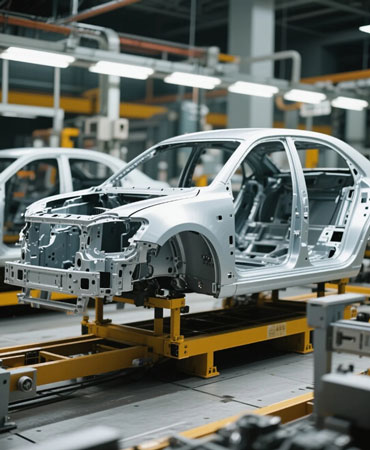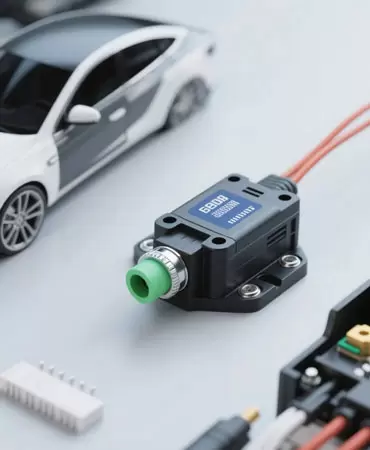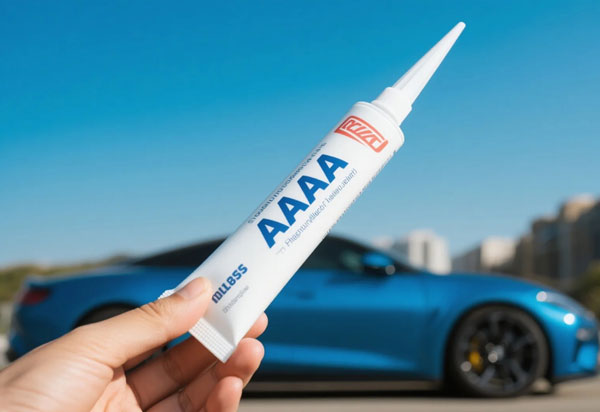 Home / News / Industry News / The important role of auto body adhesives in new energy vehicles
Home / News / Industry News / The important role of auto body adhesives in new energy vehicles 2025-08-21
With the continued advancement of global energy conservation and emission reduction policies, the new energy vehicle industry has entered a golden period of rapid development. Compared to traditional fuel-powered vehicles, new energy vehicles place higher demands on body design, material selection, and safety performance. Against this backdrop, automotive body adhesives, as key materials for joining, sealing, and structural reinforcement, are playing an increasingly prominent role in new energy vehicles. This article will comprehensively analyze the important role of new energy vehicle body adhesives from the perspectives of their technical characteristics, application advantages, and future development trends.
Automotive body adhesives are a type of high-performance material specifically used for vehicle body structures, panels, and sealing connections. Their primary functions include bonding, sealing, vibration damping, and weather protection. Based on material properties and application environments, body adhesives can be categorized into the following categories:
Polyurethane (PU) Adhesives: Polyurethane adhesives offer excellent flexibility and impact resistance, adapting to the deformation of the vehicle body under high-speed driving, collisions, and vibrations, making them a key choice for structural adhesives in new energy vehicles.
Epoxy Adhesives: Epoxy adhesives offer high bond strength and are suitable for securing and supporting structural components. They also possess excellent chemical resistance, making them a representative example of high-performance adhesives for vehicle bodies.
Acrylic Adhesives: Acrylic adhesives offer fast curing speeds and are suitable for quickly bonding large-area panels, improving production efficiency and serving as a key component in lightweight vehicle body adhesives.
Silicone Sealant: Silicone sealants are primarily used for sealing gaps in vehicle bodies. They offer excellent high-temperature, UV, and water resistance, making them ideal for automotive sealants.
By rationally selecting and combining these adhesives, new energy vehicle bodies can achieve lightweighting, optimized strength, and long-term durability.
New energy vehicles differ significantly from traditional vehicles in design concepts and material applications, which directly impacts the performance requirements for vehicle body adhesives:
Lightweighting Requirements: To increase range, new energy vehicles utilize a significant amount of aluminum alloys, carbon fiber, and composite materials. Because welding these materials is difficult and prone to stress concentration, traditional welding methods cannot meet strength and appearance requirements. Lightweight body adhesives can achieve high-strength bonding of dissimilar materials while effectively distributing stress, thereby achieving lightweight design.
Crash Safety: New energy vehicles have a unique battery layout, requiring higher overall body rigidity and energy absorption capacity. High-performance automotive structural adhesives can enhance body connection strength, improve crash safety, and protect occupants and battery modules.
Weather and Corrosion Resistance: New energy vehicles are often used in diverse climates. Body adhesives must be resistant to high and low temperatures, UV rays, and water and corrosion to ensure long-term stability.
Battery and Electronic System Compatibility: New energy vehicles are equipped with numerous electronic components and battery systems. Adhesives must possess excellent insulation and chemical stability to avoid adverse effects on battery life and electronic systems.
Body Structural Bonding: High-strength new energy vehicle body adhesives are widely used to connect structural components such as roofs, doors, and front and rear rails. Adhesive bonding allows the vehicle body to evenly distribute impact forces during a collision, improving overall rigidity and occupant safety.
Skin-Bonding: For skins made of lightweight materials such as aluminum alloy and carbon fiber, adhesives can replace traditional bolts or welding, achieving a smooth, aesthetically pleasing surface while reducing localized stress concentrations. The use of adhesives for composite materials allows for greater design flexibility.
Sealing and Waterproofing: Silicone or polyurethane sealants are widely used in areas such as doors, sunroofs, trunks, and battery compartments to prevent rain and dust from intruding into the vehicle interior and battery systems, making them a key application for automotive sealants.
Vibration and Noise Control: Flexible adhesives can absorb vehicle body vibration energy, reducing driving noise and structural resonance, improving vehicle NVH (noise, vibration, and harshness) performance, and providing a comfortable driving experience for passengers.
Composite Joining: With the increasing use of carbon fiber and composite materials in new energy vehicles, high-performance body adhesives have become the preferred solution for high-strength joining dissimilar materials, avoiding the material damage and weight increase associated with welding and mechanical fastening.
High Strength and Durability: Structural adhesives achieve high-strength bonds between metals and composite materials, ensuring the stability of the vehicle body during long-term use.
Lightweighting and Energy Saving: Adhesives replace welding and bolting, reducing the thickness and weight of structural components and improving vehicle endurance.
Design Flexibility: Adhesives allow for a variety of material combinations, meeting the complex body styling requirements of new energy vehicles.
Reduced Manufacturing Costs: Although high-performance adhesives are more expensive per unit, they can reduce overall manufacturing costs by simplifying processes, shortening assembly time, and reducing rework.
Improving NVH Performance: Adhesives exhibit a certain degree of flexibility, absorbing vibration and noise, and enhancing ride comfort.
In summary, automotive body adhesives in new energy vehicles are more than just "adhesives"; they are key materials for achieving lightweight design, improving crash safety, enhancing sealing performance, and improving overall vehicle comfort. With the continuous advancement of new energy vehicle technology, body adhesives will play an even more important role in material innovation, process optimization, and performance enhancement. For vehicle manufacturers, the proper selection and application of high-performance automotive body adhesives directly impacts vehicle safety, durability, and market competitiveness.
The future of new energy vehicles depends on the support of high-performance adhesives, and continuous breakthroughs in adhesive technology will become a key force driving the upgrading of the new energy vehicle industry.
Polyton is a professional automotive body adhesive manufacturer, dedicated to providing high-performance, environmentally friendly, and durable bonding solutions for new energy vehicles. Whether it's high-strength bonding of body structural parts, composite bonding of lightweight panels, or sealing and protecting doors, sunroofs, and battery compartments, Polyton's products meet stringent safety, weather resistance, and construction efficiency requirements. Leveraging advanced material R&D capabilities and extensive industry experience, Polyton helps vehicle manufacturers improve overall vehicle performance, achieving lightweight design, crash safety, and excellent NVH performance, providing reliable support for new energy vehicle manufacturing.



